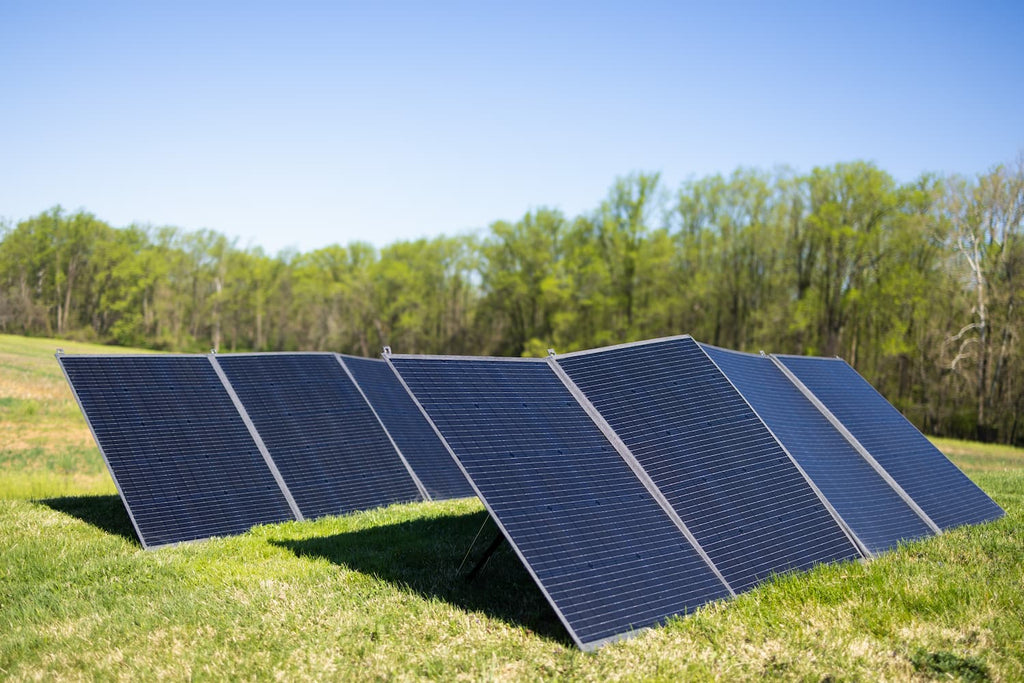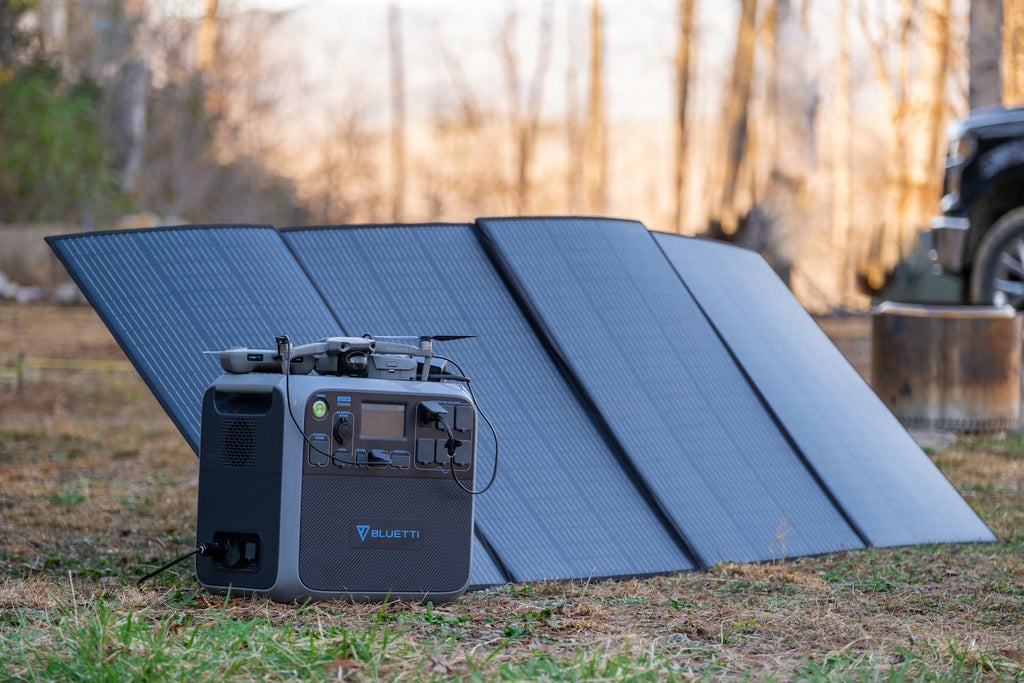Daylight power is an environmentally friendly electricity that comes from sunshine radiation and heat. Generated via daylight collectors, this process harnesses the energy of the sun and yields electrical power instead. This article investigates the pros and cons of this electricity, taking into account the situation in Canada, the costs, the lifespan of daylight collectors, and the possibility of portable options. We’ll weigh up the pros and cons, and hopefully find times when this energy can be a good option. The in-depth review is intended to help people who are looking into installing solar or are generally interested in renewable energy.
Advantages of Solar Energy
- Renewable and Abundant: This choice is clean and renewable and it is readily available. The sunlight supplies more energy within an hour than the whole world consumes in a year. Thus, this power is a sustainable alternative to meet our increasing energy requirements.
- Reduces Electricity Bills: One of the greatest strengths of this option is the fact that it can help to reduce power expenses. Once set up, these collectors continuously produce free power during their whole life. In addition, through net metering, homeowners get to make some money by selling back the extra electricity to the grid.
- Minimal Environmental Impact: There is very little environmental effect from sunshine power produced. Unlike the typical energy sources, it doesn’t produce polluting emissions, therefore, it is an environment-friendly and eco-friendly substitute. As a matter of fact, it utilizes less water for maintenance compared to that consumed by nuclear plants.
- Versatility: Another strength of daylight electricity is the variety of its applications. It can be deployed from rooftops to parking lots to even the remote areas where electricity from the grid is unavailable. The rise of portable daylight collectors has also opened up new avenues of application for solar energy.
Disadvantages of Solar Energy
- Reliability: The electricity that a daylight energy system can generate depends on how much sunshine is available. At night-time solar panels are unable to produce energy and their output is influenced by the seasons. Thus, solar energy becomes less reliable than other energy sources.
- High Initial Costs: Installing solar panels requires a significant initial investment. Nevertheless, the initial expenses will be compensated through lower electricity bills as time goes by.
- Space Requirements: Panels also take a considerable amount of space in their placement. This is a challenge for places that are densely occupied.
- Environmental Impact: However, while the energy itself is clean, the production, installation, transport, and maintenance of the solar panels create CO2 emissions. In addition, the collectors’ replacement rates are far more than anticipated. Also, the current high recycling fees increase the possibility of these used collectors being disposed of in landfills directly.
- Dependence on Subsidies: Sunshine energy is highly dependent on government subsidies. Thus, the reliability of the business industry is challenged.
- Backup Generators: As the solar energy is not 100% reliable and therefore systems with backup generators are needed to guarantee the energy supply. Such generators run on fossil fuels.
Are Solar Panels Worth It in Canada?

Canada, this country where the sun is shining bright, wind blowing cold and a question arises - is there any sense in installing solar panels in Canada? Yes it sure is.
Renewables are on the increase in Canada with the deployment of solar power growing at a steady pace. While well known for its long and harsh winters, technological progress in this sphere has provided ways to reap great amounts of this type of energy.
The initial price of these collectors can be high, but the payback savings of energy bills over time make it a sustainable investment. The initial cost usually takes between 12-15 years of solar energy savings to break even.
On top of this, the Canadian government provides rebates and tax deductions as a means to push more citizens to buy this energy. To summarize, if you plan to live in your home for the next 15 years or longer, these collectors are certainly a smart investment.
In a nutshell, these collectors are not only a possible decision in Canada but also an intelligent, environmentally friendly and economically smart option.
How Much Do Solar Panels Cost in Canada?
The expense in Canada is not a fixed amount, but a gamut which depends on different factors, for example. A homeowner may expect to pay $3.34 per watt, or roughly $25,050, for a 7.5kW solar PV system. Nevertheless, the prices of those systems tend to change along with the character of the system size, the type of equipment used and the province you live in.
For example, the average cost per installed watt is about $2.42 in Ontario while it exceeds $4.00 in Newfoundland & Labrador and Nunavut. Also, keep in mind that an average house has anywhere between 5 and 10 kW of solar panels. Therefore, in case of a 5 kW system that costs $3/W you should be ready with about $15,000 to get solar panels installed in your home.
Even though at first sight the price could be relatively high, think of solar panels as a long-term investment. Ultimately, the savings in the long run would outweigh the initial expenses. Furthermore, the government of Canada has subsidies and rebates to bring solar power cost down.
In general, the expense of the collectors in Canada is not merely a case of the numbers. But it's evidence of a desire to be a greener and better world.
How Long Do Solar Panels Last?
The serviceable duration is above twenty-five or thirty years. Yet, this doesn't entail that they stop working after that age. It only means that the decline in production has reached a level that the manufacturers find significant.
Solar panel lifetime is often over 25 years, provided they are not physically damaged by extreme weather, or something else. This is largely due to the fact that solar panels do not have any moving parts – they rarely break up from within.
A 2012 research reveals that the production of a solar panel falls by 0.8% every year on average. This factor that is known as the solar panel degradation rate determines the rate of decline. Though, technological progressions today bring plenty of new panels with only 0.5% of energy loss annually.
Thus, each sunset may mark the end of a day, but with the long-term nature of solar panels, they are able to keep on greeting the sun day after day, utilizing the power of the sun that will foster a sustainable future.
Do I Consider Portable Solar Panels?
Of course, portable solar panels make sense for those people who travel frequently or run their homes independently from the electricity grid. They serve as a renewable, green solution for sustainable sources of energy. Nevertheless, their performance can be attributed to your energy consumption, placement, and initial costs. Though they are very good for charging devices and powering small appliances they can’t power an entire house. Hence, you should consider portable solar panels if you need flexibility and longevity.
What Can Portable Solar Panels Do?
The solar powered panels for transportable devices are gadgets that convert sunlight into electricity which can be used to power a range of electronic appliances. They are light and can be easily moved to any place with sufficient solar energy. Such panels work well during outdoor activity like camping or in emergency situations where the conventional power source is not available. Besides, they have an additional advantage of being environment friendly as they produce power without creating any negative emission. Finally, they can be a cost-effective alternative in the long run as sunlight is a free and ever-lasting energy source.
And at last, let's have a look at the recommended solar panels.

This exceptional high-efficiency solar panel features a conversion rate of up to 23.4 percent which assures a highly efficient energy production. It is created in a way that allows simple installation with a detachable kickstand and is both solid and waterproof thus ideal for various weather conditions. In addition, the panel is folded and is portable which makes it convenient to carry. It carries the power of 420W, which makes it possible to perform the charging quickly. Also, its long-lasting ETFE coating guarantees the durability and its longevity. Lastly, it is a great combo for multiple BLUETTI models.

This collector has a high conversion percentage which translates into being an efficient electricity provider. Besides, it has a simple setup and has a kickstand for better positioning. Meanwhile, the panel is resistant to splashing and designed to sustain different weather types. It is widely compatible with various BLUETTI models: AC180, AC200P, AC200MAX, AC300, AC500 and EP500Pro. Similar to the PV420, this panel too can be folded and carried with you making it a convenient option for those who depend on a source of power while on the move.
Final Thoughts
In summary, solar power is a steady and clean fuel source with numerous positive long-term effects. Weather dependency and high initial investment are challenges, but there is a progressing technology, e.g., there are portable solar panels that are making the solar power more available and efficient. Certainly, in Canada, where solar is extremely prevalent, solar panels can even be an attractive choice. Thus, as we consistently fight for a more environmentally-friendly world, solar energy remains a promising opportunity to pursue.




